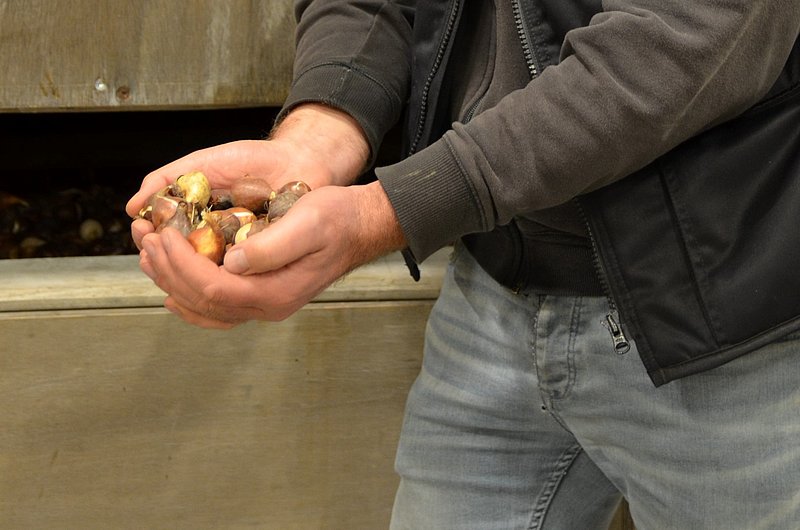The optimum choice
The Dutchman Geert Burger propagates tulips and lilies. Their cultivation requires intensive crop care, for a virus infestation decides on the approval or the denial of the seed. To guarantee more safety, efficiency and comfort with regard to the use of plant protection agents the farmer, in spring, invested in a HORSCH Leeb self-propelled sprayer with an 8000 l mixture tank, 36 m boom and state-of-the-art pulse width modulation technology. He tells us about his experiences gathered in the first season.
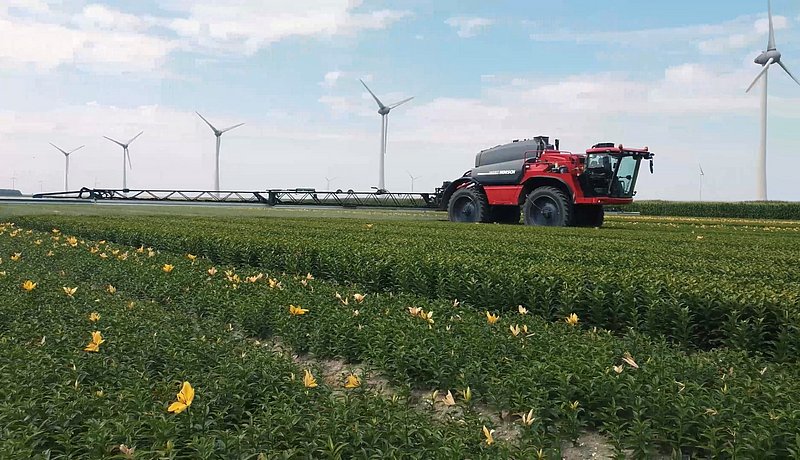
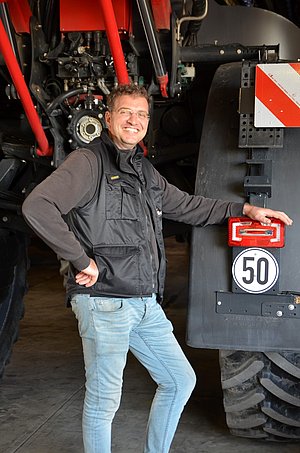
Geert Burger is a graduate horticulturist and master of business administration. Together with his nephew he manages the company Burger Lelies en Tulpen BV the headquarters of which is located in the small town of Espel, only 2 km away from the Dutch IJsselmeer. They have specialised in the propagation of tulips and lilies. They grow 150 ha of bulbs per year, 50 ha of tulips and 50 ha lilies within a radius of 20 km around Espel and the rest at a second farm site in North Holland as well as on fields in the Southern province of Limburg. “We propagate about 40 tulips and 20 lily varieties. In total, there are more than 2000 resp. 500“, Geert Burger explains.
Like most of his professional colleagues from the province of Flevoland, Geert Burger has the privilege to work on very fertile sandy and clayey soils with enough water for irrigation – optimum conditions for the cultivation of bulbs. He is not working on his own fields. “We exclusively rent the fields and as tulips as well as lilies require a cultivation break of five years, we have tenancies with quite a lot of farmers. And it helps if you work with soil-conserving and environmental-friendly technology”, Geert Burger describes his framework conditions.
Lily harvest
At the beginning of November, his team is busy with the lily harvest and the planting of the tulip bulbs. Large, tractor-pulled trailers are constantly entering the premises and unloading their content consisting of earth, roots and yellow-white bulbs into a 20-ton reception bunker in front of a large hall. From there, the bulbs pass through a multi-level wet cleaning and sorting process, are then filled into wooden boxes and air-dried. After that, a similarly large technical plant and a lot of busy hands remove the plant rests, and the bulbs are automatically sorted according to their weight.
Global trade
“The bulk of our harvest goes to our customers – Dutch export companies that deal in bulbs on a global scale. While tulip bulbs are marketed with an approximately equal share at home and in the European countries to finally raise cut flowers. Only about 10 % of the lily bulbs remain in our country. From Rotterdam, most of them are shipped to countries like Mexico, Colombia, Japan and China”, Geert Burger explains.
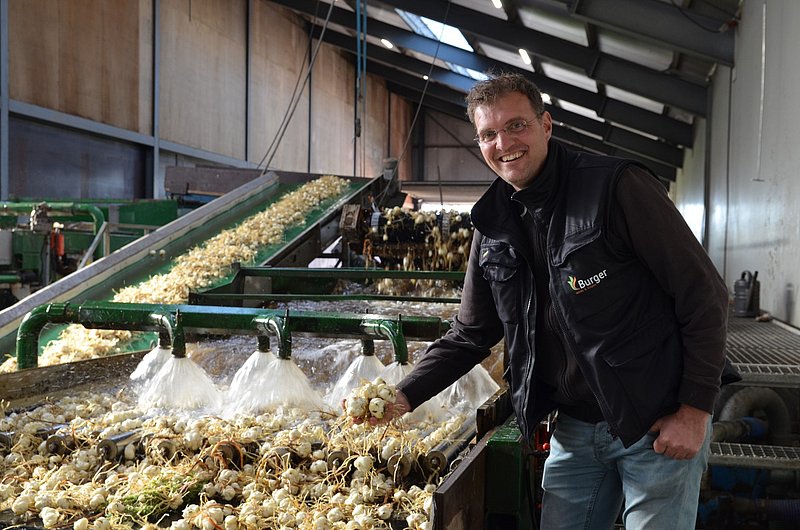
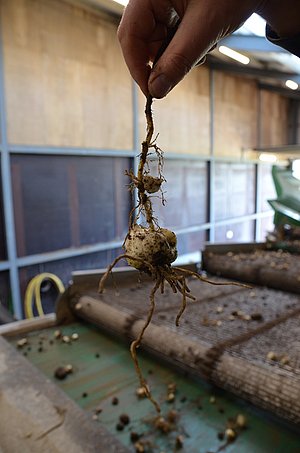
Propagation methods
The smaller part of the harvest is reused for propagation. For lilies, it is carried out by means of the scale propagation method. Therefore, the individual scales are snapped off, planted in peat moss and pass through a simulated summer and winter season in an air-conditioned dark hall. After 13 weeks with a temperature of 23°C, young bulbs have appeared on the scales – in average two per scale. A large lily bulb produces about 25 scales. Thus, Geert Burger raises about 50 new bulbs from every bulb within only six months. Another 13 weeks with a temperature of 5°C and he can bed out the young lily bulbs.
For tulips, vegetative propagation is carried out via daughter bulbs. One tulip produces one or two of them. They grow in spring resp. in summer at the mother bulb, are cleared in July and replanted in October/November.
Tulips and lilies also differ with regard to their vegetation period. This is why the eight-man team of Burger Lelies en Tulpen BV is busy all year round. During the harvest, there are about 30 to 40 temporary helps to support them.
High crop care intensity
For both species of bulbs, it is essential to keep the vector pressure in the field as low as possible. For a virus infection reduces quality and starting at an infestation of only 5 % a seed lot can be denied. In this case, it can only be used for a biogas plant. “We are talking about sums of 35,000 €/ha. Approximately the same sum can be added for the initial seed. This is why the aphid is our worst enemy and we do not take any risk with regard to fighting it”, Geert Burger emphasis. From the end of February until the harvest which starts in the second week of June, he sprays his tulips once every week, if the weather is warm even every five days – this amounts to approx. 20 passes per year. In the lilies, he even carries out 30 passes. Thus, with virus management alone the annual spraying area amounts to 2500 ha. To this figure you can add about 250 ha per year for herbicide and fungicide measures.
He uses chemical-synthetic insecticides and especially liquid repellents. “We also carry out tests with aloe vera. Compared to traditional repellents it shows a reduced effect of 30 % - a risk that we, as I have already mentioned, cannot afford. If we are going to increasingly use such ecological products resp. integrate them into our spraying strategy, I think that we will have to make even more passes”, Geert Burger assumes and adds: “With our new sprayer we at any rate have enough output.”
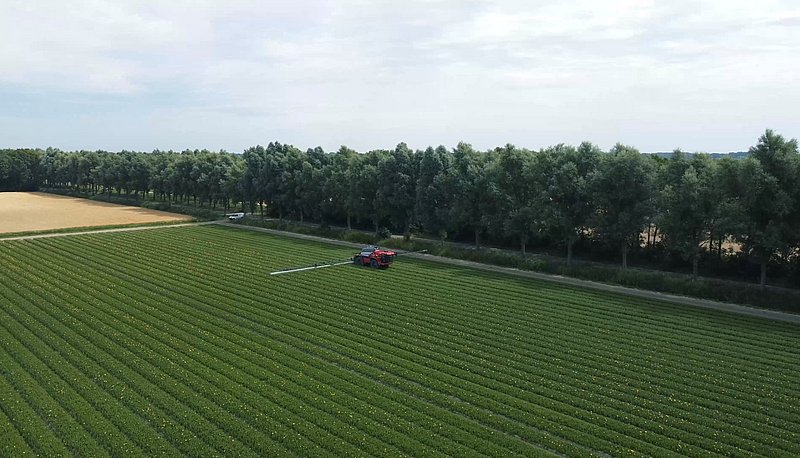
First self-propelled sprayer
At the beginning of the year, he decided to buy his first self-propelled sprayer – a HORSCH Leeb 8300 PT with an 8,000 l stainless steel tank, a 36 m boom with a nozzle spacing of 25 cm, tyre pressure regulation technology and the novel nozzle technology pulse width modulation (PWM). “Previously, we used a 4,000 l trailed sprayer with a 36 m boom and wondered whether to buy such a machine and a new tractor or to invest into a self-propelled sprayer. With the benefit of hindsight, the answer is obvious. We are completely convinced of our self-propelled sprayer. For our purposes it is in all respects better than a tractor-sprayer combination“, Geert Burger explains. They have been using the crop care sprayer since May and so far, they are very satisfied. The view to the front is better, the set-up times are significantly lower and the complete sprayer including the Raven pulse width modulation technology can comfortably be handled from the cabin. He only pre-selects the desired distance to the target area as well as the water quantity and the pressure. And in case of possible malfunctions, like for example a clogged nozzle, he automatically gets a message in the terminal. The driver and Geert Burger are real fans of the GPS steering. “Due to the RTK accuracy there no longer are overlaps when spraying. We, thus, save 1-3 % of plant protection agents for every pass. Considering that the costs for plant protection agents amount to more than 200,000 €/year, this saving theoretically means a short extra holiday”, Geert Burger calculates with a smile. With regard to fuel consumption the self-propelled sprayer is comparable to the rig consisting of tractor and 4,000 l trailed sprayer but works significantly more soil-conserving in wet conditions due to the tyre pressure regulation technology. “As we always use the same tracks for the crop care measures, soil protection is very important for us and our lessors. After all, the empty 8300 PT weighs 1.5 t”, Geert Burger argues.
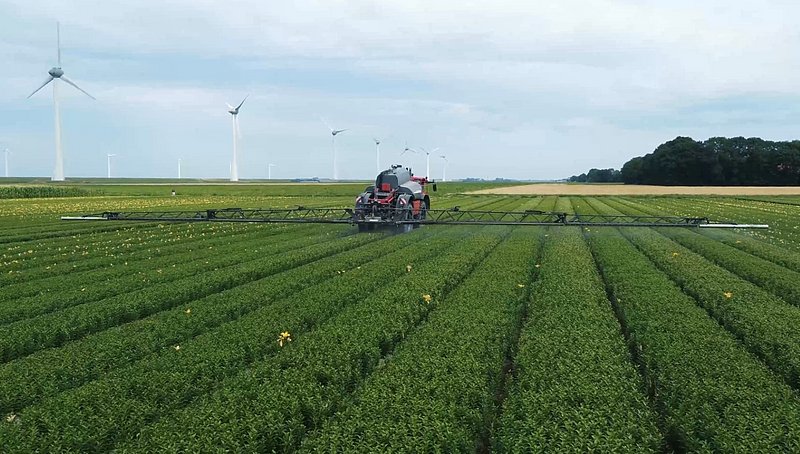
Drift reduction
In the Netherlands, almost every field borders on waters and Geert Burger works with headlands of 7 m which are not cultivated. Every time when he is turning with the sprayer his driver has to fold in the boom so that it does not cross the waters. “This is why we opted for a 5-section instead of the 7-section boom folding. It would be nice if it could be activated a little bit faster”, the farmer explains.
To avoid drift into the waters, in the Netherlands, the operational speed of sprayers is limited by law to a maximum of 8 km/h. “With our previous technology we could not keep up this speed until the end of the field. This, on the one hand, affects the output. On the other hand, the result of the crop care measures in the field boundary area was always worse than on the rest of the field”, Geert Burger remembers. “With the new technology we wanted to reduce the distance to the target area and keep the boom at a height of max. 30 cm above the population. This prevents drift but also requires a balanced, smooth boom control and a nozzle concept with a 25 cm spacing. Our new sprayer offers both and when using a 50 % nozzle we automatically achieve a drift reduction of 90 %“, he points out.
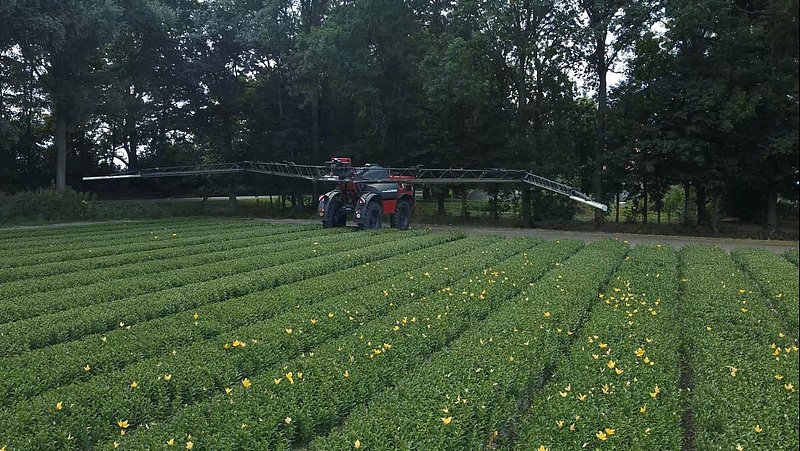
Pulse width modulation
Due to the pulse width modulation technology that Geert Burger reordered in time, his driver now can go at the allowed speed of 8 km/h until the headlands and compared to the previous sprayer even achieves a double hectare output. “For with the PWM the pressure at the nozzle and thus the drop size is always the same independent of the operational speed. This guarantees a constantly good application quality and the best effect. And I definitely think that this will also be reflected in the yield”, Geert Burger states. Moreover, the large mixture tank allows for increasing the water quantity from 300 to 350 l/ha.
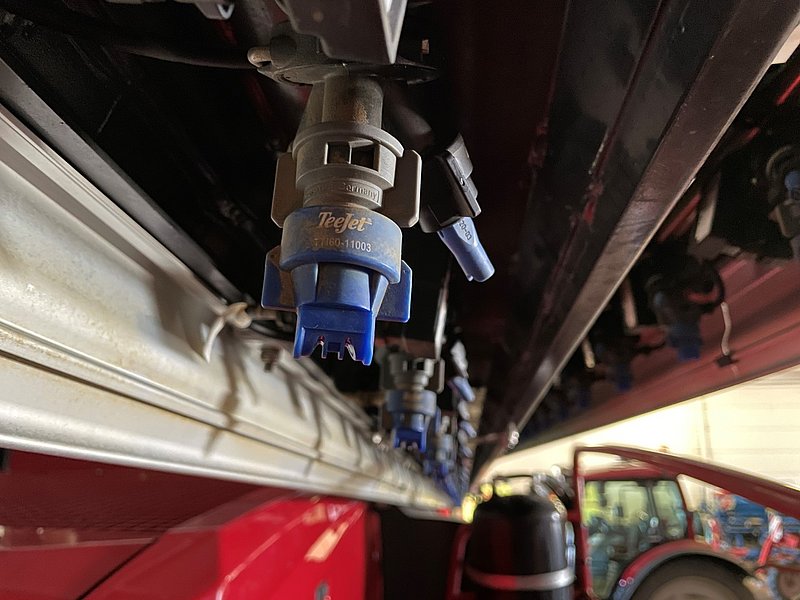
The Raven technology cost him an additional 1,000 € per meter boom width but it is due to this technology that he now gets a tax relief amounting to 27 % of the purchase price of the sprayer. “Beside the numerous technical advantages, this, of course, also was a motivation to buy the self-propelled HORSCH Leeb 8300 PT”, Geert Burger summarises.
Tulip cultivation
Whereas lilies prefer sandy sites, tulips like medium-heavy clayey soils. In the rotation, lilies mainly are grown after sugar beet and Spanish onions. Tulips, however, prefer cereals or grass as previous crops. They are planted in October/November, lilies in March.
For the tulips, Geert Burger does not cultivate the cereal stubbles as he does not want to bury stubble and straw residues. He works with a spade machine (25-30 cm deep) and a rotary cultivator with knives instead before the tulip bulbs are planted into the soil in autumn. The objective is to benefit from the harvest residues to protect the bulbs and the soil during the winter from silting and stagnant water. As a preparation for planting the lily bulbs in spring, Geert Burger grows winter rye as a catch crop to guarantee the required mellowness of the soil. In spring, he prepares the soil for planting with a plough furrow.
The bulbs are planted circularly from the inside to the outside in 1.8 m wide beds according to a digital planting map. The planter automatically accesses bulb batches of different varieties, sizes and years and automatically leaves the pre-set tramlines for the following care measures open. For tulips, planting nets are used which are to facilitate the harvest.
In winter, they get a little fertiliser input, and the remainder is applied in February/March as soon as the first plants emerge. This is when the crop care measures and the manual selection with regard to virus infestation start. In the blooming period in April/May the tulips are thinned out. After the blooming they are beheaded and eight to ten weeks later, starting in the second week of June, they are harvested.
After having been planted in May, lilies get a little fertiliser input every three weeks – in total about ten times. As soon as they boom, they are cut down. Until the harvest in October/November, the population is regularly sprayed against virus vectors and selected.
Bulbs do not form much root mass and they require much water. Tulips for example have to be irrigated six to seven times per year, lilies even up to ten times.
At Geert Burger’s farm, harvest is carried out with a conventional Amac clearing technology. Here, too, the planting map is used to make sure that the different bulb batches are harvested separately.
